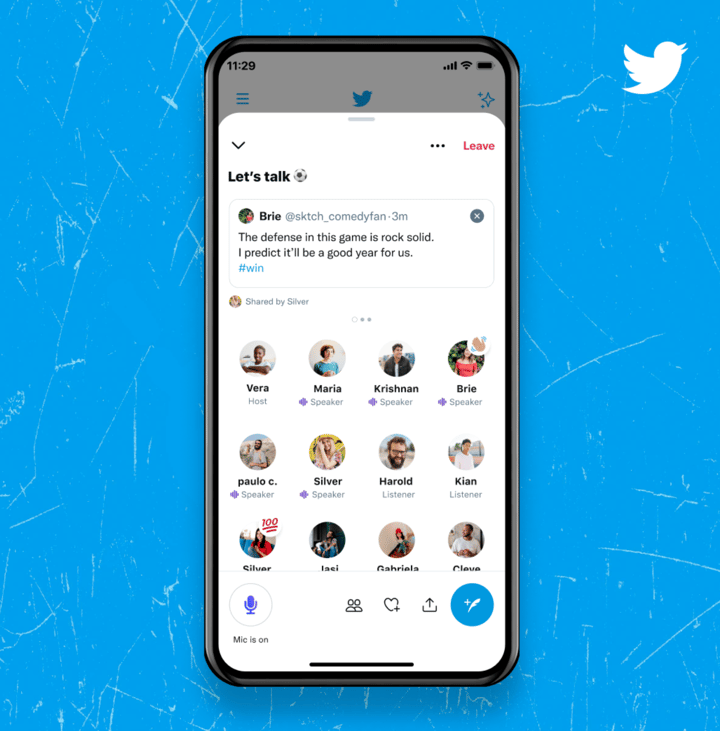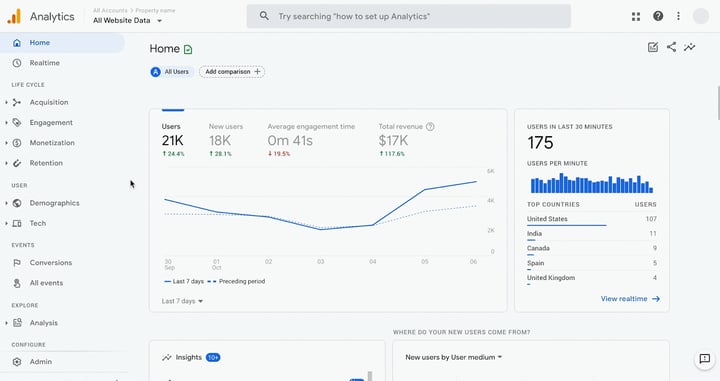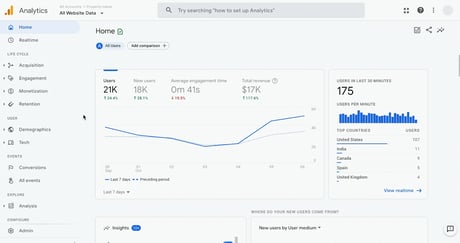-
 Written by Mark Xavier Quadros
Written by Mark Xavier Quadrosa SaaS content marketer that helps brands create and distribute rad content.
Goals have a quirky quality, not very different from new year’s resolutions. If you’re not intentional with them, it doesn’t take long until they go the way of a gym membership bought in January – constantly overlooked and bleeding money.
A SMART framework in building goals provides a way out of that rut.
What are SMART goals?
S.M.A.R.T. is a project management tool used by all marketers and most professionals across several industries to set specific, measurable, and attainable goals to ensure a digital marketing project has the best chance at success.
Writing down SMART goals is like creating a vision board but with the added benefit of having numbers to measure the achievability of that vision. They help provide a roadmap to success for digital marketers who are constantly working on one thing after the next.
Specific
When defining a goal, it helps to be as specific as possible. One way to approach the ‘Specific’ part of SMART goals is to review your business objectives and relate them back to your digital marketing KPIs.
Is your business objective this year to grow revenue? Your corresponding digital marketing goal could go like this, “Grow annual revenue from online channels like e-commerce store and social media by improving conversion rate by 8%.”
You can continue padding it with details, but this alone can provide a solid starting point. When your team wants to experiment with new ideas, for example, testing Twitter Spaces for premiering podcast episodes, the management will be more likely to greenlight it if you can tie it back to a business objective.

Measurable
Can you call yourself a digital marketer if you’re not measuring something at one time or the other?
With more tools at your disposal than you can count, measuring any of the goals set by you will be as convenient as making coffee in a Nespresso machine – a touch of a button is all it takes.
Including a target to your goal can help your team assess how much effort they need to put towards a tactic. However, if you can’t measure it, either due to a lack of tools available on hand or a skills gap on the team, it won’t be a meaningful goal to work towards.
Regardless, you should have these marketing analytics tools in your digital marketer starter pack.

Attainable or Achievable
As much as management teams love to display ambition, digital marketing does not guarantee success simply because you can measure an outcome. Setting an attainable goal that is well within a realistic boundary ensures you’re not inadvertently setting yourself up for disappointment.
An oft-used way to do this is by establishing benchmarks for chosen KPIs. For projecting marketing revenue, you can analyze marketing performance data to see if a trend emerges – diminishing or incremental – and utilize that as a parameter for an attainable goal.
Realistic
Now, it is easier for digital marketers to get lost in the weeds with data. That’s why it’s important to choose metrics that are realistic to track.
For example, you are running an online brand awareness campaign on Facebook and Instagram and one of your goals is to increase search volumes by 10K for your brand name. While search volumes are trackable, most data sources reporting search volumes are unreliable, leaving your reporting at risk of losing its authenticity.
A realistic goal would sound like, “Grow annual organic traffic by 12%.”, which will be a direct product of search volumes.
Time-Bound
It wouldn’t be a goal if you didn’t have a timeline to achieve it by, right? Let’s go back to the concept of a vision board. The idea is to pool together goals you want to accomplish in the next x number of years – could be two or five – which is up to you.
In the same vein, a truly SMART goal is one that is time-bound. It allows you to pace your digital marketing strategy according to a realistic timeline taking your team’s needs into consideration.
A time-bound goal lets you plan your campaign milestones for testing, launch, reporting, and wrap-up. An example of a SMART goal with time factored in is, “Boost customer acquisition by 5% by the end of 2024.”.
Why do you need to set Digital Marketing SMART goals?
Straight up, people can benefit from setting SMART goals in areas of life. Need to reach a certain weight? A SMART goal for that could sound like, “Achieve 140 lbs by following a cardio-weights fitness regime in 30 days.”. A few benefits are:
They give you direction
Setting a SMART goal can take your digital marketing strategy from a simple collection of tactics to one driven with purpose. To show you’re committed to digital marketing objectives, a goal could mention boosting Pinterest engagement rate by 8% by having to expand to different ad formats the platform has to offer.
They help you measure your progress
Adding a measurable KPI to the SMART goal lets you track progress while you go about implementing tactics to reach your strategic objectives. You can show the impact of SEO tactics like keyword mapping, for example, by writing a measurable goal to match up to it.
“Increase our rank in organic search results from 4th SERP to 1st for the keyword “Spain-made espadrilles” by the end of the month by optimizing existing content.”
Tips for setting good goals
Select your metric carefully
Asking a digital marketer to pick a metric is like asking someone to pick their favorite gelato flavor – there’s a different one for every season!
Choose a metric that can be measured and tracked using the tools you have available and the skills on your team to operate. If your goal is to grow your business, then increasing the number of qualified leads received from a social media promotion will be a metric best suited to it. Similarly, select a KPI that lends meaning to your brand awareness goal – a measurement for which many brands find difficult to pin down.
“Grow brand awareness by expanding social media marketing investment by 34% in new markets on the West Coast by 2023.”
Design your goal around your digital marketing strategy
Let’s say the CPA of every online visit from paid channels was $15 last year for your company. Now, suppose your goal for 2023 is to grow staff by x%. To do that you’ll need to calculate the portion of your traffic coming from paid recruitment channels like LinkedIn, max CPA for running an ad on it, and use that to set a budget.

Once you have a number to work with, you can identify LinkedIn marketing tactics. In fact, LinkedIn is the number one channel used by B2B marketers to distribute content. You can use it too to create refreshing ad creatives, optimizing copy, or refining audience targeting to accomplish that goal.
Align your SMART goal with your business goals
Take for example you’re managing social media for a real estate company and their business goal is to grow their client base for 2023 by increasing digital investment. A digital marketing goal relating to their business objective could sound like, increase leads from Instagram by 4% by the second quarter of 2023.
While there will be other platforms in the channel mix that you may or may not be managing, your team will be able to see the impact of their effort by linking back to the company’s business KPIs.
Make your marketing objectives achievable
Following the example of the real estate company, what does the increase in digital investment look like? Posting a TikTok video every day? Doubling the engagement rate?
An achievable marketing objective requires taking many factors into consideration before finalizing such as staff salaries, cost of tools, and other resources. If you have two social media coordinators on the team and no video editors, maybe posting every day will not be feasible.
“Increase qualified leads from social media by 4% by running a 3-month TikTok video ad campaign retargeted to those searching for ‘new condo developments in New Jersey.”
Understand the goals of your marketing campaign
Say you’re planning a video marketing campaign around Mother’s Day for a salon chain, and you’ve set an impression target of 250,000 users. Your overarching marketing campaign goal to help achieve that target could be,
“Reach impression target of 250,000 users by scheduling two high-quality shopping inspiration posts every day for 15 days until Mother’s Day and invest $5,000 in promotions.”
Specific: Reach impression target
Measurable: 250,000 users
Achievable: scheduling two high-quality shopping inspiration posts
Realistic: invest $5,000 in promotions
Time-bound: every day for 15 days
Know your marketing audience
Understanding the likes and dislikes of your audience – highest-engaged content, most-shared posts, highest-converting ads – all data conveniently available using CRM software.
A suitable content marketing goal for a salon chain could be to, “Gain 5,000 Instagram followers in Q1 by posting 1 educational beauty Reel every week using trending audio of the week.”
Developing SMART goals is not rocket science
You don’t need to have a post-grad in business marketing to develop SMART goals that align well with your digital marketing strategy.
Keep a close grip on your marketing objectives, know your audience inside out, and stay rooted.
A marketing team well-equipped with skills and supported top-down with the right resources can realize any goal you set for them.
-
 Written by Mark Xavier Quadros
Written by Mark Xavier Quadrosa SaaS content marketer that helps brands create and distribute rad content.
